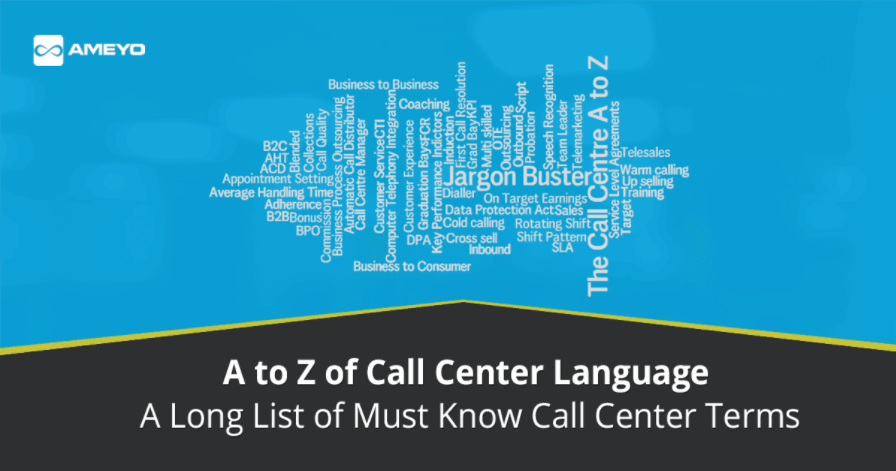We have all become accustomed to using abbreviations in our lives. Sometimes, even without knowing their meanings. This holds true – both in our professional and personal lives. But, when you are working in an industry where knowing the meaning and not just the abbreviations is important, you just cannot afford to slip up.
Here, I have tried to list down the most commonly used call center terminologies that a call center agent must know to be successful.
Architecture
The basic design of a system. Determines how the components work together, system capacity, upgrade-ability, and the ability to integrate with other systems.Attrition
Attrition is the rate at which members of staff voluntarily leave the workforce over a given period of time. It is also known as ‘staff turnover’, or ‘staff churn’.
Blended Universal Queue System (BUQS)
A combination of email, chat and other data enabling universal queuing along with call blending.
> Business to Consumer (B2C)
The Business to Consumer (B2C) model involves companies making sales directly to individual consumers rather than to other commercial enterprises.
> Business to Business (B2B)
The model involves one company trying to do business to another company
> Call Blending
A competent strategy to smoothen the demand of inbound and outbound calls. Depending on call volume, at that particular time, the agent would receive inbound and outbound calls.
> Call Handling Analysis
An approach to measure the potency and quality of handling of calls by the agents.
> Call Center Schedule Adherence
A metric used in order to determine whether or not agents are working the amount of time they have been asked or required to.
> Cloud Computing
A remote means of offering a system, service or solution utilizing a Wide Area Network (WAN) or, more locally, across a Local Area Network (LAN).Manage customer interactions and contact center operations from anywhere via any device.
Contact Center
Handles all forms of communication, not only voice calls but email, social media, and live chat.
> Cost Per Call
Total costs (fixed and variable) divided by total calls for a given period of time.
> DDI, Direct Dial Inward
A direct inbound number to the switch.
> Escalation Plan
A plan that specifies actions to be taken when the queue begins to build beyond acceptable levels.
> Help Desk
A group that supports other internal agent groups, e.g. for complex or escalated calls.
> Historical Reports.
Reports that track call center and agent performance over a period of time.
> Knowledge Management System
A desktop application that agents use as source of information to provide the answers to customer inquiries.
> Private Branch Exchange (PBX)
A telephone system located at a customer’s site that handles incoming and outgoing calls. ACD software can provide PBXs with ACD functionality.
> Public Switched Telephone Network (PSTN)
The public telephone network which provides the capability of interconnecting any home or office with any other.
> Unified Desktop
A Unified Desktop may also populate an underlying (CRM) system with interaction or customer data, in real time.
> Workforce Management (WFM)
An integrated set of processes that call centers use to optimize productivity of its agents on the individual, departmental, and entity-wide levels. It includes determining and providing schedules, forecasting, and adherence for a workforce in their future events.
Hopefully after going through this comprehensive list of call center jargon, you will not feel left out or be clueless when asked to be part of a customer experience or call center focused discussion. Having said that, we need to remember that this list is not exhaustive!
Explore more on: How to setup a Call Center



